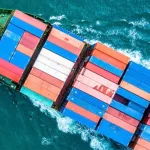 China’s textile and garment industry seeks breakthrough in trade friction
China’s textile and garment industry seeks breakthrough in trade friction
In an era where economic globalization faces considerable headwinds, and the rise of unilateralism and protectionism reshapes global trade patterns, China’s textile and garment industry finds itself navigating an increasingly severe landscape of trade friction. The China National Garment Association highlights the rapidly evolving and complex environment challenging the sector.
Experts from the Legal Department of the China Chamber of Commerce for Import and Export of Textiles and Apparel (CCCT) forecast that trade friction within the industry will persist at high levels through 2025. They anticipate not only a sustained high number of overall cases but also a significant increase in review cases as existing measures expire. Concurrently, the industry must brace for the rise of anti-circumvention investigations and an elevated risk from US Section 337 investigations, which typically target intellectual property rights. Faced with this complex and shifting trade environment, the CCCT reaffirms its commitment to collaborating with all parties, utilizing the “four-body linkage” mechanism to assist Chinese textile and apparel export enterprises in preserving market access and ensuring the stable development of the industry.
Trade risks remain exceptionally high, as evidenced by the year 2024, which saw a record number of trade friction cases targeting the industry. A total of 25 cases were initiated, including 15 original investigations. The financial implications were substantial, with the amount involved reaching US$1.63 billion, a 26% increase compared to the previous year. According to the established cyclical patterns of trade remedy measures, anti-dumping duties generally have a taxation period of 5 years, while safeguard measures typically last for 3 years. Consequently, numerous cases where duties were imposed between 2020 and 2021 are scheduled to expire in 2025, leading to the anticipated surge in review cases. This presents a significant burden for companies, requiring them to simultaneously manage reviews of expired cases alongside newly initiated trade remedy investigations. Furthermore, the persistent escalation of global trade protectionism, particularly the challenging impact of the United States’ approach to tariffs, poses major hurdles for textile and clothing exports to the US market.
In recent years, anti-circumvention investigations have emerged as a prominent new instrument in trade disputes. These investigations serve as an extension of anti-dumping measures, aimed at preventing targeted products from circumventing existing duties through various strategies. Since 2019, China’s textile and clothing sector has encountered 14 such investigations, with Turkey initiating 11, India 2, and Peru 1. The scope of products involved is extensive, encompassing man-made and synthetic staple yarns and sewing threads, woven fabrics of synthetic filament yarns, synthetic and man-made staple woven fabrics, polyurethane-impregnated textiles, polyurethane synthetic leather and artificial leather, polyester high-strength yarn, and fishing nets, among others. These investigations often lack the quantitative standards seen in traditional anti-dumping, anti-subsidy, and safeguard (“two anti-one protection”) cases, affording investigating authorities greater discretionary power. This complexity necessitates that enterprises enhance compliance awareness, improve business structures, standardize commercial behavior, and adopt proactive measures as top priorities to mitigate the adverse impacts.
The risk associated with US Section 337 investigations is also notably increasing. For instance, in October 2024, the United States launched a 337 investigation concerning specific flash-spun nonwoven materials from China and related products. Subsequently, on January 31, 2025, another 337 investigation was initiated targeting specific patterned body-shaping clothing and their products, resulting in the issuance of a general exclusion order, a limited exclusion order, and cease and desist orders. In response to these actions, officials advise Chinese export companies not only to actively engage in the legal response but also to significantly enhance their awareness and protection of intellectual property rights, increase investment in technological innovation and research and development, reduce dependency on single markets like the US, and actively explore a broader range of international markets to lessen the potential negative effects.
An analysis by the CCCT reveals several key characteristics of the investigation cases initiated against Chinese textile and clothing products last year. Firstly, the record high number of cases involved a wide array of products, ranging from upstream textile raw materials like synthetic fibers to downstream ready-made items such as clothing. Secondly, chemical fiber products have become a focal point, representing the hardest-hit area in trade remedy investigations. Valued for performance advantages like high strength, wear resistance, and ease of washing, these materials are widely used but have attracted increased scrutiny due to growing trade protection sentiments among foreign competitors. Nearly half of the 25 trade friction cases in 2024 involved chemical fiber products. The main initiating countries for these investigations were Turkey (6 cases), the United States (4), India (2), Indonesia (2), Pakistan (2), Mexico (2), and Brazil (4).
A third characteristic highlighted is the international transmission of trade friction, where similar products face multiple investigations across different countries. Trade remedy actions by one nation frequently prompt similar actions by others or by competitor companies. Nylon filament yarn products serve as a prime example, having been subjected to 10 trade remedy investigations since 2005 by India, Brazil, and Turkey, with a cumulative value involved of approximately US$440 million. In light of this trend, Chinese textile and garment companies are advised to formulate proactive product export strategies to anticipate and mitigate the risk of cascading investigations triggered by sudden export surges to particular markets.
Amidst these challenges, the China National Textile and Apparel Council (CNTAC) actively supported Chinese enterprises throughout 2024 by providing precise legal services and safeguarding their rights and interests. Key actions included organizing one early warning work meeting and five response coordination meetings, contributing significantly to efforts like the successful launch of the no-injury defense for the Brazilian polyester filament yarn anti-dumping case. During these meetings, the CNTAC promptly shared crucial information with enterprises, including basic case details, customs data for involved products, and historical context, strongly encouraging active participation in defense efforts to achieve favorable outcomes. Simultaneously, the CNTAC worked in close coordination with government departments, ensuring enterprises received necessary policy guidance and legal support.
Furthermore, the CNTAC focused on enhancing the capacity of enterprises to handle trade frictions by organizing specialized training sessions and holding informative seminars. Legal experts were invited to elucidate effective response strategies for trade remedy investigations, helping companies better understand complex international rules and legal procedures. Case analyses were conducted to summarize lessons learned, providing valuable references for future situations. The Council also actively guided companies to strengthen their intellectual property protection frameworks and bolster technological innovation capabilities, specifically to address IP-related trade frictions like the US 337 investigations.
Looking ahead, the CNTAC plans to continue its focus on key tasks and trade friction hotspots this year, further promoting enterprise services. Initiatives include continuing the translation of anti-dumping, anti-subsidy, and safeguard measures laws and regulations from key countries, compiling comprehensive case response guidelines for these nations, and making these resources readily accessible to enterprises via the China Trade Remedy Information Network. The Council will ensure timely announcement of foreign trade remedy case filings and rulings concerning textiles and clothing, organize robust case response work to safeguard enterprise rights and industrial security, and conduct ongoing trade friction response training to help businesses improve their overall risk resistance. The overarching goal remains to build a highly skilled, unified, pragmatic, efficient, and proactive legal service team dedicated to contributing significantly to the high-quality development of China’s textile and garment industry.
 China’s textile and garment industry seeks breakthrough in trade friction
China’s textile and garment industry seeks breakthrough in trade friction




